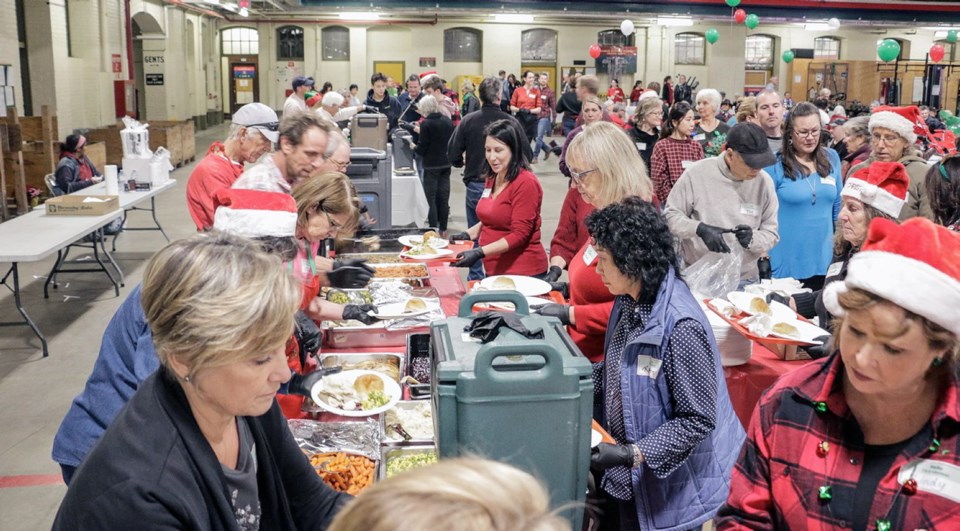 The idea is to make donations stretch as far as they can, especially in a difficult year like this one
The idea is to make donations stretch as far as they can, especially in a difficult year like this one
Here’s something you should know about many of Victoria’s Christmas charities: They work together.
They sit down, compare the names of those who need help, try to avoid duplication and — this is even more important — strive to ensure no one falls between the cracks. That should give a degree of comfort to donors.
Just as this should bring a degree of discomfort: Donations are down so far.
“We’re seeing it slower out of the gate this year,” says CFAX Santas Anonymous’s Christine Hewitt.
Same goes for the Times Colonist Christmas Fund.
Ditto, says the Mustard Seed Street Church’s Janiene Boice. “We’re all a little bit behind the eight ball. We all feel it.”
That makes for a double whammy, as more people are in need. “The cost of living has gone up quite a lot in Victoria,” Boice says.
The Salvation Army’s Patricia Mamic also speaks of the cost of living while talking about the changing face of poverty in Victoria. “We’re seeing a lot of seniors and single-parent families come through our doors.”
All four groups belong to an organization called the Christmas Giving Network. So do the St. Vincent de Paul Society, Saanich Peninsula Lions Food Bank, 1Up Victoria Single Family Resource Centre, Sooke Christmas Bureau, Burnside Gorge Community Centre and a few others.
The idea is to co-operate and co-ordinate, to make the donations stretch as far as they can.
“We all work together very, very closely,” Hewitt says.
“We all communicate,” echoes Boice. “We all work together to get the most bang for our buck.”
It’s a matter of playing to everyone’s strengths. Take Hewitt’s group, for example. CFAX Santas Anonymous’s mandate is families with children. It collects new toys and other gifts for those under age 17 (presents that the kids themselves have requested) as well as money that buys food for the holiday season.
It’s a big operation — a small army of 420 volunteers pour in 19,700 hours a year, wrapping gifts, delivering hampers and so on — so has some ability to help smaller charities. It might, say, take on families that have applied to the Sooke bureau or St. Vincent de Paul for help. Doing so then lets those organizations serve more elderly singles and other recipients.
Then there’s the way the Times Colonist Christmas Fund works. We’re pretty good at raising money but not as good as the Mustard Seed and Salvation Army at figuring out who needs it most, so we funnel all our donations to them. They put together food hampers, and open temporary “shops” where parents can choose toys, clothing and other gifts. The TC fund also paid for the Mustard Seed turkey dinner at the Bay Street Armoury last week.
Alas, demand is outpacing capacity. Charities have had to move their own deadlines earlier than in past years, just to give themselves the time to handle the increased number of recipients.
Monday morning found Boice putting together the wholesale food order for the 1,500 hampers (about half of them for families) that the Mustard Seed will fill this year. Donors tend to envision a traditional Christmas dinner with all the trimmings — and yes, there’s a grocery store gift card to cover the turkey and other bits — but the hampers tend to go beyond that: pancake mix for breakfast, staples like tuna and pasta, some soap, toothpaste and shampoo. People don’t just need help on Christmas Day.
As Hewitt points out, shutting classrooms for the two-week holiday period hits those children who rely on school-based programs for breakfast and lunch. “Our kids shouldn’t be hungry,” Hewitt says. “It’s just wrong.”
It’s not just the youngest ones, either. The Salvation Army’s Mamic frets about seniors and youth — all those couch-surfing 18-year-olds who, for whatever reason, find themselves without the comfort of family at Christmas. They tend to get forgotten when the charity “shops” are stocked. “The shelves for youth are noticeably barer,” Mamic says.
Note that the Salvation Army’s kettle campaign, its biggest fundraiser of the year, has its official launch Dec. 4. It funds not just Christmas hampers, but pays for food, clothing and emergency shelter year-round — and yes, more people from more backgrounds are showing up in need.
“There’s a growing number of people living in poverty who you don’t always see,” Mamic says.
Hewitt says that, too. “I hate using the term working poor, but it’s working on the edge of poverty.”
At this point, I should probably be plugging the Times Colonist Christmas Fund (make a donation here). The truth is, though, that all the local fundraising efforts could use help. For those who are in a position to do so, the fact that we give matters more than where we give.
As Hewitt say: “It all reaches the same place.”



